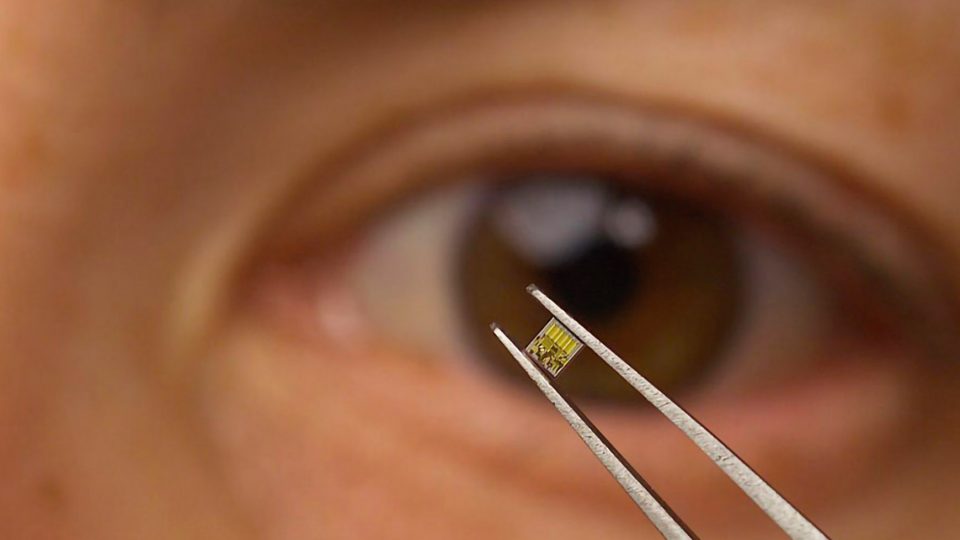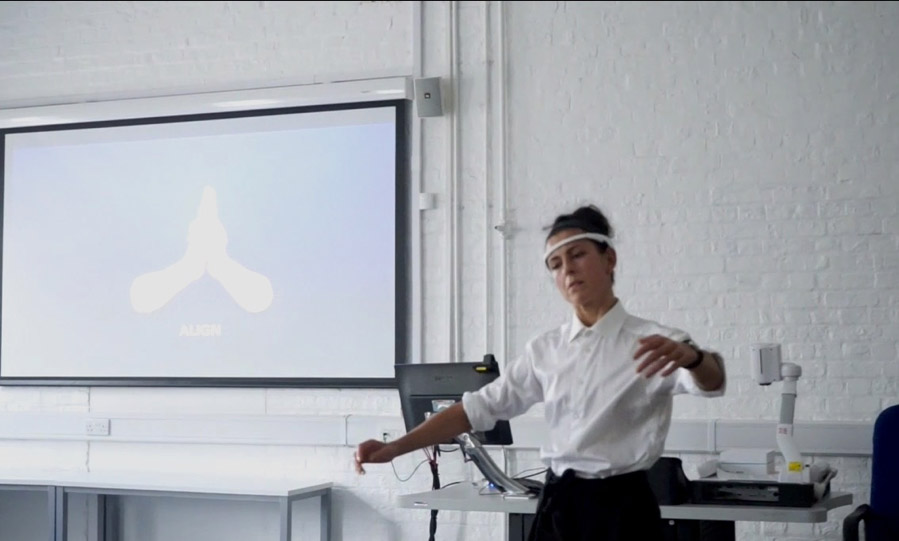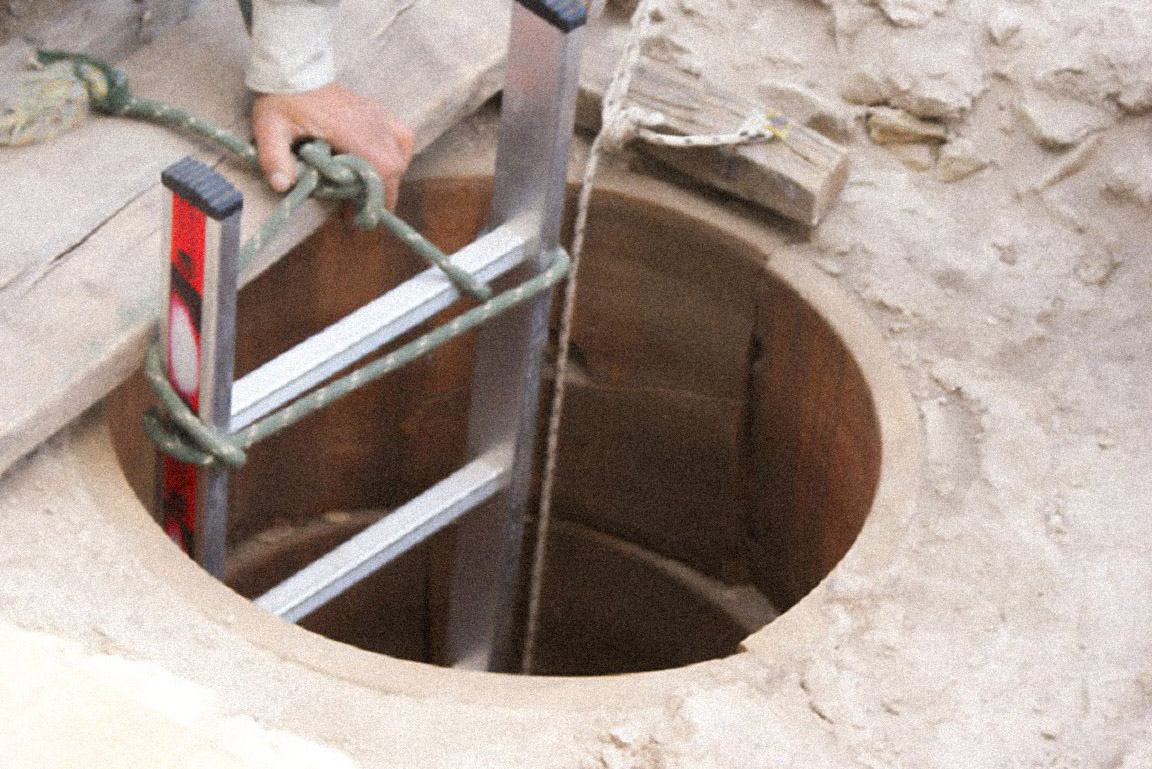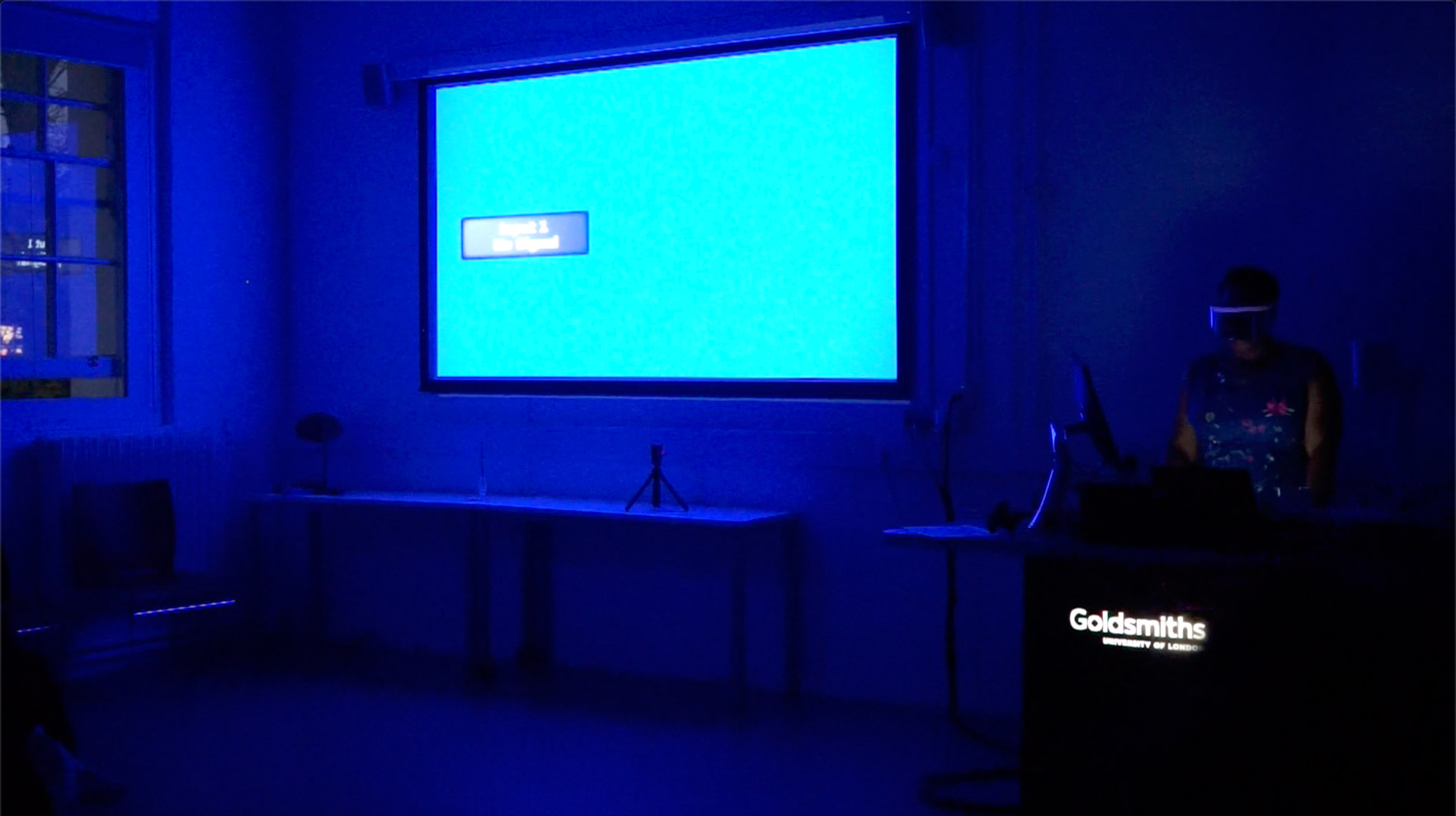Document #5 - Dominique Baron-Bonarjee, Sam Plagerson, Rowena Harris, Clareese Hill - Portholes, freezeframes, siliconchips, and circadianbits

Dominique Baron-Bonarjee, Sam Plagerson, Rowena Harris, Clareese Hill
Portholes, freezeframes, siliconchips, and circadianbits
Document #5 - 15 November 2018
Plentitudes of techno-buffering, conversation-spluttering, and cataclysmic space-time-rupturing, were manifest in the researchers endeavours towards dialogue in developing the event - a result of utilising Skype to abridge geo-time-space. Inspired by the synergy between this experience and individual research concerns, the event took the form of four presentations - a series quartered - each segment offering a different perspective on issues within digital temporalities. And encircling questions of identity and being present; of the future and it’s utilisation; of time algorithmically encoded into images and objects; of embodiment and free time. Of portholes, freezeframes, siliconchips and circadianbits (not necessarly presented in that running order).
The four presentations encompassed performance with live neuro-feeds, a lecture, performative talk, and stagings in character. Each presentation was followed by response from an invited guest.
Dominique Baron-Bonarjee
What do we know about free time?
Guest respondent Astrida Neimanis

Still from Liquidity performance, Dominique Baron-Bonarjee
For this presentation Dominique situated a live performance entitled Liquidity, along with an artist film, and a dialogue via Skype with guest respondent Astrida Neimanis. Focusing on the concept of ‘flow’ or ‘flow state’ - a term coined by psychologist Mihaly Csiszentmihalyi to indicate a sense of effortlessness and timelessness whilst doing an activity, the presentation explored what might be a paradox at the point of encounter between human and machine, that comes in the form of a question: as automation is set to liberate humans from work and labour, what do we know about free time?
Liquidity is a daily practice developed by Dominique which allows reflection on mobility as the will to move, and on non-doing as the possibility of flow. It is a moment practice where the artist researcher wears an EEG headset to monitor brain waves, which provides a form of feedback and acts as a witness. During the performance presentation, live brain-wave-data-graphs on portable devices, were available for the audience to see. In this way the performance aims to poetically weave together resonances, from micro to macro, from measure to the immeasurable, and interrogate our current ideas of progress, efficiency and value.
The artist film Fragility as Constraint is a proposition to teach artificial intelligence about touch, and, citing Karen Barad, asks “When two hands touch, how close are they? What is the measure of closeness?”.1 Teachings come by way of score, or instruction, or self-hyponsis:
Water is seeping, through
walls, cracks, in the ceiling
in the floors, imperceptible.
Inside and outside losing
their hard delineation.
You are leaking, becoming,
transparent,
diaphanous skin, splayed
open into a skein…
A membrane is an open
system,
A membrane is a liquid
crystal semi-conductor with
gates and channels.
The membrane is an
information processor,
Like a silicon chip
It too is a membrane.
The discussion with Astrida Neimanis, reflected up on Neimanis’ theoretical concept of ‘weathering’, in relation to ‘Liquidity’. Where weathering describes socially, culturally, politically and materially differentiated bodies in relation to the materiality of place, across a thickness of historical, geological and climatological time. As that part of speech known as a gerund, weathering also names a practice or a tactic: to weather means to pay attention to how bodies and places respond to weather-worlds which they are also making; to weather responsively means to consider how we weather with other bodies, and how we might weather differently from other bodies that weather. Not all bodies weather the same; weathering is a situated phenomenon embedded in social and political worlds.3
But what would it mean if, in order to withstand the weather, we became water instead?
Liquid, moving, filling up with the liquid that also is the weather world we are in: we are moving with, rather than against, the weather-world, in order to cushion its blow.
How might becoming-liquid or liquidity as method for weathering open to different understandings both of our bodies, of weather (which is the total climate) and of their always complicated intimacy? How would liquidity, as method, help us to understand that you are the weather; that is, that the weather is also you?
Sam Plagerson
Slow-Mo
Guest respondent Aaron Casley

Still from Sam Plagerson’s lecture. 3D scan image courtsey Veronica Scanner Project, Factum Foundation
This presentation took the form of a lecture with visual material, which explored the complex relationship between 3D capture, and the algorithmic encodement of time contained within, as well as a response to those concerns through a paper by Aaron Casley.
Present advancements in digital technologies are producing images which are starting to challenge the very ideas which have been fundamental to histories of representation. With the convergence of photography and 3D imaging technologies, photography’s depictive parameters are becoming reshaped through their integration with software and algorithmic calculations. This reshaping is entailing a temporal reordering of photography into a spatial form. In film and image theory scholars are asking “What has happened to the image?” 4 This new image reconfigures our understanding of time-based technologies and their relation to capture.
The notion of capture is intricately tied to how photographic technologies inscribe a moment in time. However, in 3D imaging the algorithmic configuration of digitally gathered data, re-distributes the moment of capture transforming the frozen snapshot into a sculptural freeze. This temporal state is an enmeshment between the captured data and the software’s processing of that data. The multiple photographs necessary to facilitate these 3-dimensional forms are re-sequenced according to correlative spatial connections leaving this reconstruction suspended between the temporal experience of a still image and the sculptural.
The petrification of time enacted by photographic processes has been articulated through numerous theorists, yet 3D imaging technologies are rarely considered in relation to historical ideas of photographic capture. There is an assumption that these digital processes are solely depicting form, but the quality of their “realism” cannot be separated from the individual frames captured, and the algorithm’s registration and interpretation of that data. This lecture sets out to consider what trace of the sequence of captured time is left on a 3D model rendered through software? How do we place these 3D visualizations within parameters of photography’s temporality? How is photographically captured time metamorphosed as sculptural space?
Sam’s paper and Aaron’s response are available online to read in full:
Link: Slow Mo: Time into Space - Sam Plagerson
Link: A response to Slow Mo - Aaron Casely
Rowena Harris
Where to begin? - or - How do you begin at the start if the future and past are not where you would normally find them?
Guest Respondent Sally O’Reilly

Still from Rowena Harris’ reading. Archeological site of Kerameikos ancient Cemetery, Athens. Courtesy Greek Ministry of Culture
The presentation took the form of a performative reading in character, as a way to explore a literary method of narrativising research concerns. First from Rowena Harris - switching from researcher herself into a fictional professor - and followed by a response from Sally O’Reilly, in character as an ombudsperson who, in official capacity, was sent to audit the professor’s work.
Through fiction and narrativisation, the presentation sought to address, what has been described as a foreclosure of the future through a preemptive logic.5 A logic from the datalogical realm, but one which makes porous any boundary between that and the ontological, as versions of inhuman time reach into the grounds of human subjectivity in their operation on non-conscious bodily responses and affect.6 The fictional form is a method to think outside of this logic of time - to claim a future back - and to highlight whom, or what different states of being, mind, or sensibilities - might be being lost. What happens if we claim that another future has (and therefore will) already happen(ed)?
As if gazing from the world’s end, the professor is engaged with items and paraphernalia described as being from the future-past - a future that has already taken place. And seeks to bring these fractured parts into an archive as an attempt to study the lost society from which they came, through their absence.
Sally O’Reilly performed as a representative of the Complex Temporal Organon Institute (TOC), an NGO overseeing the deregulation of representations and experiences of time. The ombudsperson’s aim is to dismantle the beginning-middle-end model of narration, and to these ends she analysed the deployment of temporal frameworks in the professor’s research and some of her references. Such literary manoeuvres as beginning, causality, temporality of reading, temporality of writing and futurity were analysed, and the findings presented through sound, image, diagram and the rhetoric of the corporate presentation.
Clareese Hill
The Hyper Present - the Manipulation of time and Space
Guest Respondent Evan Ifekoya

Still from performative reading The Hyper Present. Claresse Hill.
This presentation took the form of a performance entitled The Hyper Present. In character, through reading as well as in the use of sound, the performance explored navigating the act of being present in the contemporary social-political capitalistic structure of Western culture. And, now necessary to speak in the first person for the rest of this description, Clareese explains that: the impetus of the performance was to explore how to depart from the universally understood state of being present to engage with something else.
As an Afro-Caribbean American woman, I often confront the challenge of situating what does it mean to participate without assimilating into a system that is not designed for me. How can I separate from this system without creating more trauma to my already precarious and damaged identity? In order to explore this idea I enact performances as the GUIDE of the post-identity space. The GUIDE does not have a gender, race, or other ethnic identifying markers. In the Post-Identity space identities become essence. A sort of you without “you”. In the performance, the GUIDE takes on the earthly representational body of the black woman, which by social definition and treatment is a marginalized identity. The GUIDE uses the problematic body to critically dispense research and social commentary. The GUIDE suggests there is the possibility of an othering that can happen through the process of what is called in African American vernacular being Woke.
Being Woke is a political term that revolves around being aware of social justice issues and other issues revolving mostly around the topic of race. I am appropriating the term to open up the meaning to be a process that happens to produce a sense of critical awareness of societal frameworks that are often problematic but stanchly perpetuated. The performance of the GUIDE uses research and a body in order to provoke the catalyst of being Woke by exposing problematic issues and thinking through the process of separating from the bodily demands of being present to experience a Post-Identity othering.
Dominique Baron-Bonarjee
Dominique Baron-Bonarjee’s Indian and French heritage, growing up in Europe and Africa, and later moving to Japan, problematize her own identity and form the starting point for considering the posthuman as a poetics of consciousness. Emerging from the paradoxes of embodiment, at once material, object, consciousness, simultaneously malleable, resistant and enmeshed within deep time, and through methods of listening and response, she weaves nodes of self to world, by glitching existing systems. Taking the body’s use-value as instrumental to notions of identity and self-worth, she looks to technology to amplify questions of productivity, measure and time, and their resonance as phenomenological consciousness. An engagement with Eastern philosophy and beliefs allows alternate perspectives, interrogating normativity by considering animate and inanimate, along a line of equality. Her PhD ‘Space for the Nameless’ proposes an open system, where the edge, rather than a limit, is a membrane, a zone of encounter, permeability and uncertainty. www.dominiquebb.com
Sam Plagerson
Sam Plagerson is a current PhD candidate in the Art Department at Goldsmith’s College, and since graduating from The Royal College of Art in 2008 has exhibited nationally and internationally. Exhibitions include Things on things, Maverick Projects, London; Image Object, Furini Arte Contemporanea, Rome; Tryouts, Downstairs Gallery, Herefordshire; Bloomberg New Contemporaries; Pop will Eat Itself, Art on the Underground. He was the recipient of a Henry Moore Artist Fellowship Grant and an award from the Eaton Trust. www.samplagerson.com
Rowena Harris
Rowena Harris is a London based artist and art researcher. Through physical materiality, film work, and writing, her work unfolds at the intersection between the body, matter, and technology. Within this she is engaged with exploring the formation of perception, subjectivity, and sensory understanding, entangled with the everyday technological regime. She is a CHASE funded, practice-based PhD candidate in the Art Department, Goldsmiths College, holds an MFA from the same (2010), a BA Fine Art from Falmouth University (2008). Recent awards and residencies include shortlisted for Tenderfilx artist moving image prize; Sainsbury’s scholarship The British School at Rome; Atelier Salzamt Residency; and was the founding editor of Misery Connoisseur Magazine. She has recent solo exhibitions with Las Palmas, Lisbon; The Gallery Apart, Rome; Object A, Manchester; Coleman Projects. And group: Trafó House, ANGL Collective, Copperfield Gallery, Space In Between, Tenderpixel, The Bluecoat, Fondazione Memmo, Bloc Projects, Flat Time House, Artissima, Agnes Varis Centre. www.rowenaharris.com
Clareese Hill
Clareese Hill’s research engages with her concern for the word identity and its relationship to space. By attempting to remove language from the social meanings for spaces, she hopes to create conceptual spaces that challenge what identity means and how it operates. by exploring the many possibilities available to unhinge it from its social trappings she creates a new praxis for being. Through her experimental investigations, the use of technology becomes a vital part of the project as she seeks to create new dialogs between disparate materials. Clareese has shown her work internationally at Sullivan Galleries in Chicago, SVA galleries in New York, Ugly Duck project space in London, British Film Institute in London, and Anglia Ruskin in Cambridge, UK. Clareese holds an a Master in Fine Arts from School of the Art Institute of Chicago. She is currently studying in the Art Ph.D. program at the Goldsmiths University of London. www.clareesehillstudio.com
Respondent bios
Astrida Neimanis
Astrida Neimanis is a writer, researcher and teacher who works in an intersectional feminist mode. Her primary interests are water and weather, and the queer collaborations of bodies enabled by these phenomena. Her latest book is Bodies of Water: Posthuman Feminist Phenomenology (Bloomsbury 2017). She is currently Senior Lecturer in Gender and Cultural Studies at the University of Sydney, on Gadigal Country, AU.
Aaron Casley
Aaron Casley is currently working towards a PhD in Philosophy at the University of Winchester. His research interests span the fields of continental philosophy, museum studies, and art theory, and his thesis is entitled The Place of Art: A Phenomenological Investigation into the Relation Between Art and Place. He has presented his research at a number of national and international conferences, notably the Society for European Philosophy Conferences of 2016 and 2017, and the 42nd Collegium Phaenomenologicum in Italy in 2017, and regularly teaches on the undergraduate philosophy programme at Winchester.
Sally O’Reilly
Sally O’Reilly writes for performance, page and video. Publications include the novella The Ambivalents (Cabinet, NY, 2017), the novel Crude (Eros Press, 2016), a monograph on Mark Wallinger (Tate Publishing, 2014), The Body in Contemporary Art (Thames & Hudson, 2009) and the interdisciplinary broadsheet Implicasphere (co-editor, 2003-8). She has also written libretti for the operas The Virtues of Things (Royal Opera, Aldeburgh Music, Opera North, 2015) and And London Burned (Temple Music Foundation, 2016). Her short fiction has been published by Cabinet magazine, Various Small Fires, Artenol, Contemporary Art Society, Picpus and London Underground.
Evan Ifekoya
Evan Ifekoya’s current work investigates the possibility of an erotic and poetic occupation using film, performative writing and sound, focused on co-authored, intimate forms of knowledge production and the radical potential of spectacle. Their ongoing project ‘A Score, A Groove, A Phantom’ explores archives of blackness, sociality and inheritance as they diffract through queer nightlife and trauma in the present moment. Most recently the relationship between a buddhist practice, speculative fiction and the echo as affective encounter propels their thinking. Ifekoya’s recent work has been presented at: Gasworks London; Contemporary Arts Centre New Orleans as part of Prospect 4; Embassy Gallery, Edinburgh, New Art Exchange, Nottingham; Plymouth Arts Centre; Serpentine Galleries, London; Wysing Arts Centre, Cambridgeshire; (2017); Transmission Gallery, Glasgow; and Stevenson Gallery, Cape Town (2016). Recent performances have taken place at Brunel Museum as part of Block Universe in collaboration with Victoria Sin, Camden Arts Centre (2018), ICA London and KW institute, Berlin (2017) and Jerwood Space, London and Whitstable Biennial (2016). Ifekoya was an Art Foundation Fellow in Live Art, 2017.
1 - Barad, K., (2018) On Touching: The Alterity Within[Online] URL https://www.youtube.com/ watch?v=u7LvXswjEBY&feature=youtu.be [accessed 26.01.19]
2- A poeticisation of concepts found within: Neimanis, A., (2017) Bodies of Water. Bloomsbury Academic.
3 - Neimanis, A., Hamilton, J.M., (2018) Weathering. Fem Rev 118, 80–84. https://doi.org/10.1057/ s41305-018-0097-8 [accessed 26.01.19]
4 - Røssaak, E. (Ed.), (2011) Between stillness and motion: film, photography, algorithms, Film culture in transition. Amsterdam University Press, Amsterdam.
5 - Parisi, L., (2017). Reprogramming Decisionism - E-flux Journal vol 85 [Online] URL http://www.e-flux.com/journal/85/155472/ reprogramming-decisionism/ (accessed 11.10.17).
6 - Clough, P., (2018). The user unconscious: on affect, media, and measure. University of Minnesota Press, Minneapolis, US

